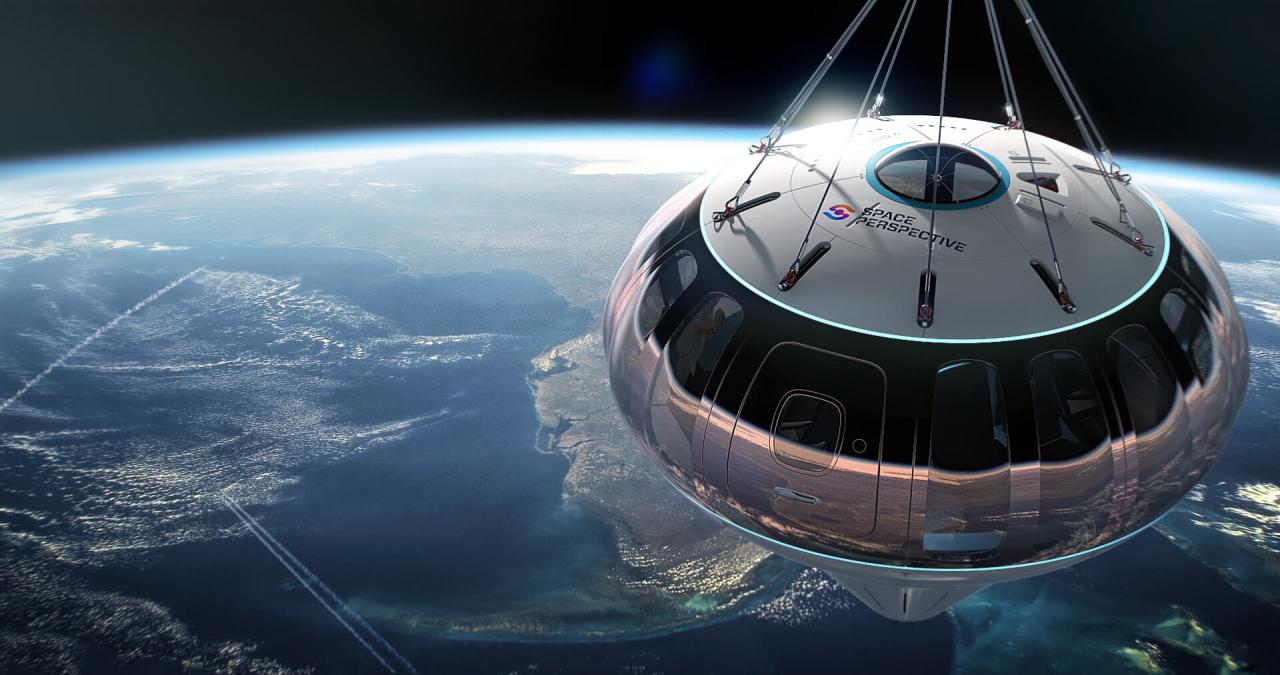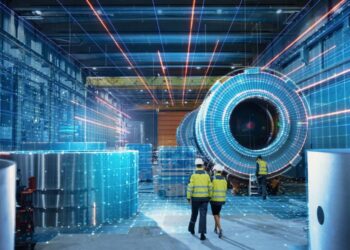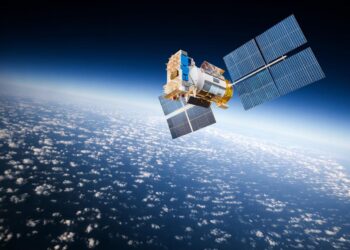For decades, space was the exclusive domain of governments and national space agencies. It was a realm of pure scientific discovery, geopolitical competition, and immense, taxpayer-funded projects. But a new era is dawning, one where private enterprise is not just a partner, but a central driver of innovation and exploration. The commercial space horizon is expanding at a breathtaking pace, promising to democratize access to space, revolutionize industries on Earth, and unlock a new, multi-trillion-dollar economy. This comprehensive article delves into the profound impact of commercial space technology, exploring the foundational innovations that make this a reality, the diverse applications that are already reshaping our world, and the immense opportunities and critical challenges that lie ahead as we open the final frontier to the free market.
The journey to commercial space began with a simple, yet revolutionary, idea: what if we could make space travel cheaper? The Space Shuttle program and the Apollo missions were technological marvels, but they were also incredibly expensive and inefficient. The cost of launching a single pound of payload into low-Earth orbit was astronomical, a major barrier to widespread exploration and commercialization. The advent of new technologies, particularly reusable rockets pioneered by companies like SpaceX, has fundamentally changed this economic equation. What once cost tens of thousands of dollars per pound now costs just a few thousand, with the promise of even lower costs in the future. This dramatic reduction in cost is a game-changer. It is a powerful catalyst that is enabling a new class of companies to enter the space industry, from small startups building microsatellites to tourism companies offering flights to the edge of space.
Today, the commercial space sector is a vibrant and diverse ecosystem. It is no longer just about launching rockets. It is about building satellite constellations that provide global internet access, developing new forms of propulsion for interplanetary travel, and even exploring the possibility of asteroid mining. Governments are no longer the sole source of funding; private investors are pouring billions into the sector, recognizing that the potential for return is immense. This is more than a technological shift; it is a profound societal one, where we are beginning to redefine our relationship with space, moving from a realm of exploration to a realm of commerce, from a place we observe to a place where we do business. The commercial space horizon is not a distant fantasy; it is a tangible and rapidly expanding reality.
The Pillars of the Commercial Space Economy

The power of the commercial space revolution is built on a sophisticated and integrated technological ecosystem that is fundamentally different from its predecessors.
A. Reusable Rockets and Launch Cost Reduction
The most significant innovation in commercial space is the development of reusable rockets. For decades, a rocket was a single-use, multi-million-dollar vehicle that was discarded after a single launch. Companies like SpaceX have pioneered a new approach where the first stage of a rocket, and in some cases the entire rocket, can be landed back on Earth and reused for another mission. This has drastically reduced the cost of launching a payload into orbit, a process that was once the primary barrier to entry for many space companies. This is a shift from a “disposable” to a “reusable” model, which has unlocked a new era of affordability and accessibility for space.
B. Small Satellites (Smallsats) and Mass Production
The cost of launching a satellite has been a major barrier to entry for many companies. The new era of reusable rockets has been complemented by the rise of small satellites, or “smallsats.” These are small, refrigerator-sized satellites that can be mass-produced and launched in large numbers on a single rocket. This has made it possible for small startups to launch their own satellites, and for established companies to build massive constellations that provide a wide range of services, from global internet access to real-time Earth imaging. This is a shift from a “bespoke” to a “mass production” model, which has democratized access to space for a new generation of companies.
C. Advanced Propulsion Systems
While chemical rockets have been the workhorse of the space industry, new advanced propulsion systems are being developed to enable a new era of interplanetary and even interstellar travel. Companies are exploring the use of electric propulsion, such as ion thrusters, which are incredibly fuel-efficient and can be used to propel a satellite for years. Others are developing new forms of nuclear propulsion that could one day be used to power a mission to Mars in a fraction of the time it would take with a traditional chemical rocket. The development of these new propulsion systems is a critical step toward unlocking the economic potential of deep space.
D. 3D Printing and On-Demand Manufacturing
The traditional manufacturing of a rocket or a satellite was a long and expensive process that required a massive facility and a team of skilled engineers. The rise of 3D printing has fundamentally changed this. Companies are now using 3D printing to create everything from rocket engine components to satellite chassis, a process that is faster, more affordable, and more precise. This allows for a new era of on-demand manufacturing, where a new rocket part or satellite can be designed and built in a matter of days or weeks, rather than months or years. This is a shift from a “fixed” to a “flexible” manufacturing model, which is a key to a more agile and innovative space industry.
Applications Across a Wide Range of Industries

The benefits of commercial space technology are not limited to a single sector; they are being applied to a diverse array of industries, creating new efficiencies and opportunities.
A. Global Internet Connectivity
The most significant and immediate application of commercial space is its ability to provide global internet connectivity. Companies like Starlink, OneWeb, and Project Kuiper are deploying massive constellations of LEO satellites that can provide high-speed, low-latency internet to every corner of the globe, including remote and rural areas that are not served by traditional fiber optic or cellular infrastructure. This is a game-changer for education, commerce, and human connection, and it is a powerful force for bridging the global digital divide.
B. Earth Observation and Data Analytics
A new generation of commercial Earth observation companies are launching constellations of smallsats that can provide a continuous stream of high-resolution images of the planet. This data is being used for a wide range of applications, from monitoring climate change and tracking deforestation to providing real-time data for agriculture and urban planning. Data analytics companies are using AI and machine learning to analyze this data, providing businesses and governments with new insights that can help them to make more informed decisions.
C. Space Tourism and Human Exploration
The reduction in launch costs and the development of new, reusable spacecraft are making space tourism a tangible reality. Companies like Virgin Galactic and Blue Origin are offering suborbital flights to the edge of space, providing a unique and exhilarating experience for private citizens. Furthermore, companies like Axiom Space are developing private space stations that will be used for both tourism and commercial research. This is a shift from a world where space exploration was a government-funded mission to a world where it is a commercial and consumer-driven experience.
D. In-Space Manufacturing and Resource Utilization
The ultimate goal of the commercial space horizon is to make space a self-sustaining economy. This will be made possible by in-space manufacturing, where companies can use 3D printing and other technologies to build products in orbit, and by in-space resource utilization, where companies can mine resources from the Moon and asteroids. The value of these resources is immense, and the ability to manufacture in space will reduce our reliance on Earth and open up a new era of deep space exploration and colonization.
Overcoming Challenges to a Commercial Space Future
Despite the immense promise of the commercial space horizon, its development is not without significant challenges that must be addressed.
A. Orbital Debris and Traffic Management
The rapid increase in the number of satellites in low-Earth orbit is raising a major concern about orbital debris and traffic management. The constellations being deployed consist of thousands of satellites, and the plans are for tens of thousands more. This could lead to a catastrophic chain reaction known as the Kessler syndrome, where a collision creates a cascade of debris that makes it impossible to launch new satellites. The development of a global system for traffic management and new regulations for debris mitigation are critical to ensuring the long-term sustainability of space.
B. Regulation and Governance
The commercialization of space is outpacing the ability of governments to regulate it. The current legal framework for space is built on a Cold War-era treaty that does not address many of the issues of commercial space, such as resource rights and liability for accidents. The development of a new regulatory and governance framework will be crucial to ensuring that the commercial space industry is safe, secure, and operates in a way that is consistent with international law. This is a major challenge that requires a collaborative effort from governments and the private sector.
C. Cybersecurity and In-Space Security
The infrastructure of the commercial space economy, from ground stations to satellites, is a new target for cyberattacks. A hacked satellite could be used for espionage, to disrupt communications, or even to cause a collision. The cybersecurity of commercial space is a paramount concern that requires the development of robust security protocols and a new focus on “security by design,” where every component of the system is built with security from the ground up. This is a critical challenge that requires a new level of collaboration between the public and private sectors.
D. Long-Term Financial Viability and Sustainability
While the cost of launch is falling, the commercial space industry is still a risky and capital-intensive business. Many of the most promising applications, such as asteroid mining and in-space manufacturing, are still in their early stages and have not yet proven to be profitable. The challenge is to find a business model that can provide a long-term financial viability and sustainability for these companies, and to ensure that the industry does not become a speculative bubble that bursts. The path to profitability for many of these applications is long, and it will require a new level of patience and long-term vision from investors.
Conclusion
In conclusion, the commercial space horizon is a transformative force that is fundamentally reshaping our relationship with the final frontier. By leveraging the power of reusable rockets, small satellites, and advanced propulsion systems, private enterprise is moving beyond a supporting role and is becoming the central driver of innovation and exploration. This is not just an incremental improvement on the space industry but a fundamental reimagining of what space means. It is a new paradigm that is democratizing access to space, providing high-speed global internet access, and unlocking a new, multi-trillion-dollar economy that will redefine our world.
The promise of this new era is immense. It offers a solution to some of the most pressing challenges of our time, from the global digital divide to the need for new, sustainable resources. It holds the potential to create a future where space is not just a place we visit but a place we work, a place we live, and a place we build a new society. This is a new era of exploration and commerce, where the dreams of science fiction are rapidly becoming a reality.
However, as we embrace this new era, we must also be mindful of the challenges that lie ahead. The issues of orbital debris, regulation, and cybersecurity are not footnotes; they are central to the responsible development of the commercial space industry. We must navigate this path with a new spirit of global collaboration, ensuring that the final frontier is built in a way that is safe, sustainable, and equitable for all of humanity. The commercial space revolution is a journey that will be defined not just by what we can launch, but by what we do with the opportunities that lie beyond the Earth’s atmosphere. The journey is well underway, and the final destination is a world redefined by the power of commercial space.




